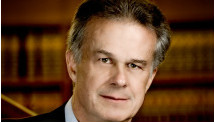NEW ORLEANS (AP) — No Tom Brady. No Aaron Rodgers. No Ben Roethlisberger. Not a Manning in sight.
Super Bowl has a pair of fresh faces at quarterback, bona fide nobodies as far as the NFL title game goes. But one will leave New Orleans as football's newest star.
For Colin Kaepernick and Joe Flacco, this is new territory. And, of course, exactly where they want to be.
Flacco, the only quarterback to win a playoff game in each of his first five NFL seasons, will lead the AFC champion Baltimore Ravens into Sunday's matchup against the NFC-winning San Francisco 49ers and Kaepernick, a backup for most of his two seasons.
It's the first time in more than a decade that the big game doesn't feature one of the big five household names in the glamour position.
You can't get much fresher than quarterbacks who never have gotten this far before.
"At the start of the season, I was just hoping to get on the field some way, somehow," said Kaepernick, the backup for Alex Smith, who took the 49ers to the conference final last season.
He got that chance after Smith sustained a concussion on Nov. 11, and hasn't seen the bench since.
Win this one and he'll have a piece of history, joining a heady quarterback club that includes Hall of Famers Joe Montana and Steve Young, who guided the 49ers to five NFL titles — a victory every time they played. No. 6 would tie the team with Roethlisberger's Pittsburgh Steelers — a record for most Super Bowl wins.
A second-round draft pick in 2011 out of Nevada — not exactly Alabama — Kaepernick has the shortest pro resume of any Super Bowl quarterback. It's impressive, nonetheless. His legs (181 yards rushing against Green Bay, a record for the position) and his arm (105.9 passer rating in the postseason) are the main reasons San Francisco is in its first NFL title game in 18 years.
"Anybody that is out there on the football field, you want to see them produce and get results," left tackle Joe Staley said. "With Colin, his first couple of starts, you did not know what to expect because we had not seen him out there as a starting quarterback. He did amazing and he has all season, as well as the playoffs. I think it was one of those things where we saw him in practice and we just wanted to see how he was going to handle the situation in the games. He has done that."
Still, he's new to this environment and that hardly seems to faze Kaepernick.
"One thing I've always said about him from the start is he comes off as a guy that has a lot of confidence," said center Jonathan Goodwin, who won a Super Bowl snapping for Drew Brees and the Saints three years ago. "I'm not just saying that. You can feel it by the way he acts and talks."
Flacco has that air of certainty, too, but at least it's built on a more substantial foundation, including an 8-4 mark in the playoffs, with six road wins — the most for any quarterback, Montana and Young included. That goes for Baltimore's John Unitas, too.
Nobody is comparing Flacco to them just yet, except for the self-belief he brings to the job.
"There are a lot of different ways to lead, and the bottom line is it's about motivating your players to get the best out of them, and having belief that you can go do it in any situation," Flacco said last week.
"You've got to do it your own way. And I think, naturally, as you get more comfortable with people and people understand you more, and you become more confident in them, and they become more confident in you, you become more vocal as time goes on."
And you become a Super Bowl quarterback.
___
Online: http://pro32.ap.org/poll and http://twitter.com/AP_NFL


